‘Surviving Lunch’ shines a light on bullying and school violence
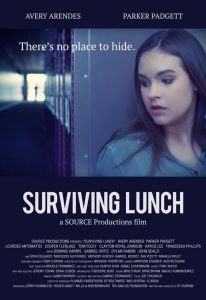 On Saturday, April 13, the 9th Annual Fort Myers Film Festival will screen the feature film Surviving Lunch produced by Source Productions. Based on true stories about real American teenagers ripped from today’s harrowing headlines, this timely and important film shines a light on bullying and school violence.
On Saturday, April 13, the 9th Annual Fort Myers Film Festival will screen the feature film Surviving Lunch produced by Source Productions. Based on true stories about real American teenagers ripped from today’s harrowing headlines, this timely and important film shines a light on bullying and school violence.
The film revolves around a Latina girl from New York who moves to Florida with her mother after her father is killed before her eyes in a school shooting. Trying to keep to herself and recover from her grief, Gabriella notices a boy being relentlessly bullied in the lunchroom. With the memory of her father fresh in her heart, Gabriella is determined to find a way to stop the bullies – even if it means standing up to the meanest kid in the school.
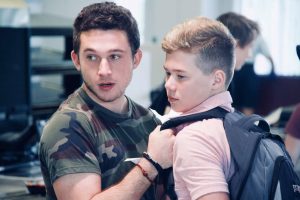 “I chose the title Surviving Lunch specifically because, while talking to young people across America about bullying and violence, lunch time at school has always been a particularly complicated time to navigate,” says writer and director KT Curran. “Even something as simple as what table you sit at during lunch can become a painful process of humiliation and rejection. Many kids actually
“I chose the title Surviving Lunch specifically because, while talking to young people across America about bullying and violence, lunch time at school has always been a particularly complicated time to navigate,” says writer and director KT Curran. “Even something as simple as what table you sit at during lunch can become a painful process of humiliation and rejection. Many kids actually 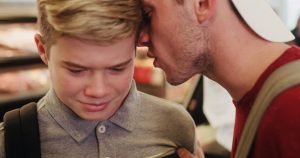 eat their lunch each day in the bathroom in order to avoid bullying.”
eat their lunch each day in the bathroom in order to avoid bullying.”
“What’s interesting about high school lunch is that everybody is there,” says Parker Padgett, who plays the role of Robert, the bully in the film. “It’s kind of a microcosm of the real world, so to speak, where you 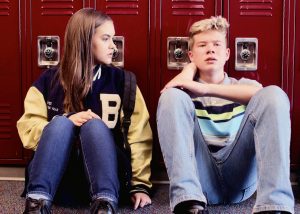 are surrounded by hundreds of different people every single day. There’s always going to be that one person who just wants to get at you. Maybe high schools do it on purpose. They throw everyone in a lunchroom just so we can battle it out. I think that Surviving Lunch could be a metaphor for just surviving. It’s like survival of the fittest in this one rectangular room with echoing walls and lunch ladies.”
are surrounded by hundreds of different people every single day. There’s always going to be that one person who just wants to get at you. Maybe high schools do it on purpose. They throw everyone in a lunchroom just so we can battle it out. I think that Surviving Lunch could be a metaphor for just surviving. It’s like survival of the fittest in this one rectangular room with echoing walls and lunch ladies.”
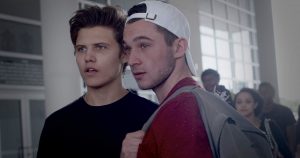 Curran originally wrote the screenplay to examine the factors that make some kids so unhappy and lost that they are willing to use extreme, even lethal, measures to lash out at each other. But then circumstance conspired to underscore the importance of this inquiry. Just as Curran began casting calls, the
Curran originally wrote the screenplay to examine the factors that make some kids so unhappy and lost that they are willing to use extreme, even lethal, measures to lash out at each other. But then circumstance conspired to underscore the importance of this inquiry. Just as Curran began casting calls, the  shootings at Marjory Stoneman Douglas in Parkland, Florida occurred.
shootings at Marjory Stoneman Douglas in Parkland, Florida occurred.
“[M]any of us knew people who attended school there or worked at MSD,” adds Curran. “Each morning, when we came to the high school where we were filming, I would pass the flag at half-mast, waving in the early morning light. It was chilling to have that visual reminder 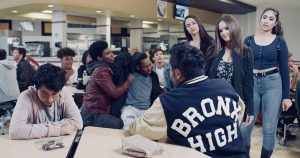 that what we were working on wasn’t fiction. School violence is happening all around us.”
that what we were working on wasn’t fiction. School violence is happening all around us.”
To further amplify the sense of dread and panic being experienced by students, teachers and administrators, the schools at which they were filming (there were three) rushed to 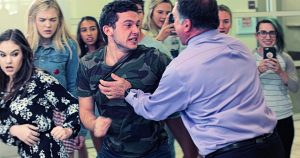 close off entrances, add bullet proof glass to administration offices, install security cameras and implement other safety measures.
close off entrances, add bullet proof glass to administration offices, install security cameras and implement other safety measures.
“Kids and teachers were making plans about what to do during a school shooting, students were holding vigils,” Curran adds.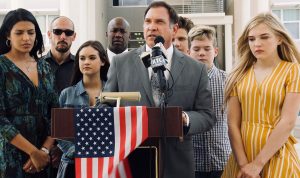 “[I]t was challenging to have conversations with kids about the fear they were holding about being safe in school, and it was challenging to talk to law enforcement who shared the heartbreak of responding to school shootings.”
“[I]t was challenging to have conversations with kids about the fear they were holding about being safe in school, and it was challenging to talk to law enforcement who shared the heartbreak of responding to school shootings.”
On top of this, the violence didn’t stop.
Although 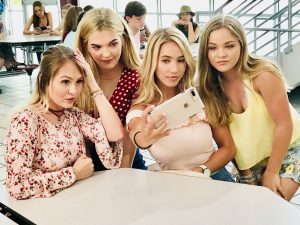 the Parkland survivors called their movement Never Again, just 94 days later eight students and two teachers were mowed down by a gunman at a high school in Sante Fe, Texas. As tragic as that shooting was, hundreds of kids 18 and under continued to fall victim to gun violence one and two at a time – on street corners, in their homes and backyards.
the Parkland survivors called their movement Never Again, just 94 days later eight students and two teachers were mowed down by a gunman at a high school in Sante Fe, Texas. As tragic as that shooting was, hundreds of kids 18 and under continued to fall victim to gun violence one and two at a time – on street corners, in their homes and backyards.
But this didn’t deter Curran, 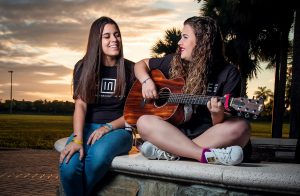 her cast and crew. If anything, it spurred them on.
her cast and crew. If anything, it spurred them on.
In the end, the film had a healing effect on the community. It uniquely enabled the filmmakers, actors, students, teachers, administrators and police officers to do something positive to address the situation. And it was particularly gratifying to Curran and her team 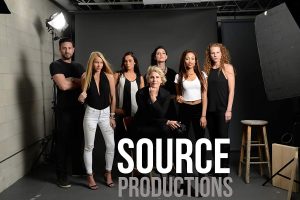 that Marjory Stoneman Douglas High School students Sawyer Garrity and Andrea Pena allowed them to use their poignant song “Shine” in the movie’s closing credits.
that Marjory Stoneman Douglas High School students Sawyer Garrity and Andrea Pena allowed them to use their poignant song “Shine” in the movie’s closing credits.
“Shine was written by these two students in order to raise funds for art programs for those still traumatized by the school shootings,” points out Curran.  “Sawyer and Andrea are beautiful and courageous girls, and they have inspired us tremendously with their courage and talent.”
“Sawyer and Andrea are beautiful and courageous girls, and they have inspired us tremendously with their courage and talent.”
Surviving Lunch is produced by Source Productions, a film company created by Planned Parenthood of Southwest and Central Florida.
The film features a talented cast of more than 200 teen and adult actors, all of whom are committed to using the talents to address bullying and gun violence in American schools.
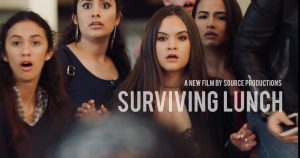 Avery Arendes stars as Gabriella. Parker Padgett is Robert the bully and Kaycie Lee is Lacey, a high school girl struggling to fit in by sacrificing her own identity.
Avery Arendes stars as Gabriella. Parker Padgett is Robert the bully and Kaycie Lee is Lacey, a high school girl struggling to fit in by sacrificing her own identity.
Topical, timely and more relevant than ever, the 74-minute feature screens in the Sidney & Berne Davis Art 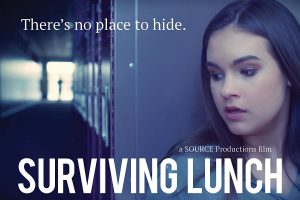 Center on Saturday, April 13 at 8:00 p.m.
Center on Saturday, April 13 at 8:00 p.m.
“It is our hope that Surviving Lunch will provoke audiences to seek solutions to stop the violence.”
March 20, 2019.
#BeYou@#FMFF














 Tom Hall is both an amateur artist and aspiring novelist who writes art quest thrillers. He is in the final stages of completing his debut novel titled "Art Detective," a story that fictionalizes the discovery of the fabled billion-dollar Impressionist collection of Parisian art dealer Josse Bernheim-Jeune, thought by many to have perished during World War II when the collection's hiding place, Castle de Rastignac in southern France, was destroyed by the Wehrmacht in reprisal for attacks made by members of the Resistance operating in the area. A former tax attorney, Tom holds a bachelor's degree as well as both a juris doctorate and masters of laws in taxation from the University of Florida. Tom lives in Estero, Florida with his fiancee, Connie, and their four cats.
Tom Hall is both an amateur artist and aspiring novelist who writes art quest thrillers. He is in the final stages of completing his debut novel titled "Art Detective," a story that fictionalizes the discovery of the fabled billion-dollar Impressionist collection of Parisian art dealer Josse Bernheim-Jeune, thought by many to have perished during World War II when the collection's hiding place, Castle de Rastignac in southern France, was destroyed by the Wehrmacht in reprisal for attacks made by members of the Resistance operating in the area. A former tax attorney, Tom holds a bachelor's degree as well as both a juris doctorate and masters of laws in taxation from the University of Florida. Tom lives in Estero, Florida with his fiancee, Connie, and their four cats.